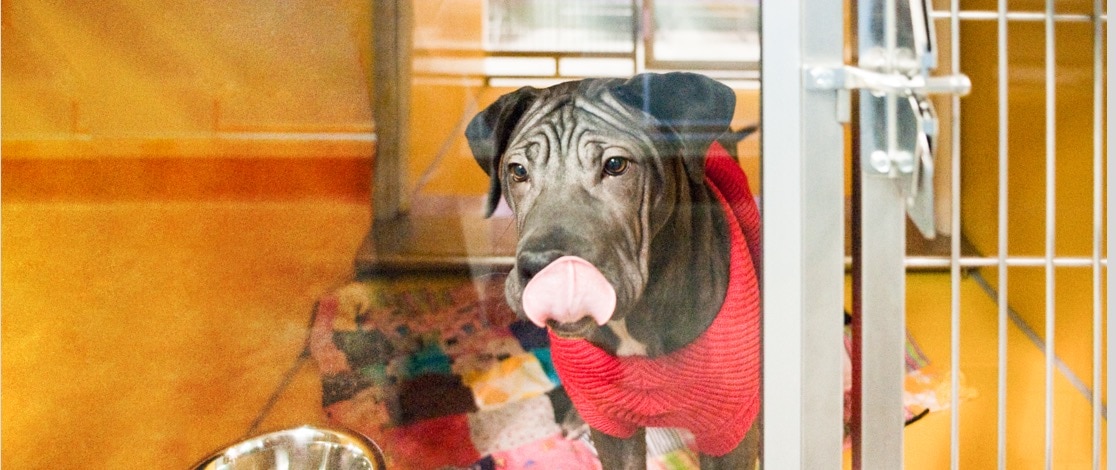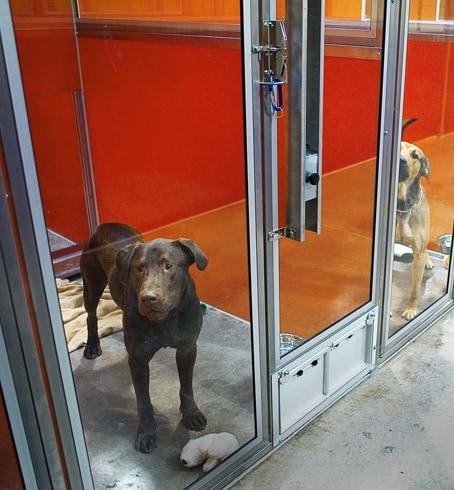More research is emerging that addresses how color can affect how pets and their caregivers behave in a healthcare environment. And that information can help animal care facilities make design choices. Pantone, the company most broadly associated with color, explains how people view color based on past experiences and associations. “Color is light and light is energy. Scientists have found that actual physiological changes take place in human beings when they are exposed to certain colors,” Pantone’s website reports It is that emotional reaction to color that has so excited researchers. In everything from healthcare to consumer spending, if a particular color scheme can produce and a predictable outcome, then everyone can benefit. Potential adopters are responding constantly from when they first enter a shelter through until they leave with or without a pet. And, the shelter staff spend their days in potentially stressful situations. Cleanliness is one of the key factors adopters sight in what influences their trust in a shelter or rescue. In the Babin study, healthcare consumers said White and Blue were the two colors that most made them think a facility was clean. When walking a through a shelter, both employees and the animals will be reacting the color in the facility. Colorful environments are associated with fun, and blue and breed are associated with cool and calm. Entering a “meet and greet” with a calm demeanor is good for the animal and the potential adopters. When thinking about what color would make them feel most restful, more than half the Babin study participants said blue would be their preferred color. Not surprisingly, of all the color palettes available, about half of respondents preferred a cool (blues and greens) color scheme. For years people and scientists thought dogs and cats saw only black and white. Now, there are studies showing they see much broader color palette. We first put up a blog a few years ago on color and pet facilities. Veterinary Vision, Inc, a practice of veterinary ophthalmologists, has a wonderful website that helps explain pet vision and vision issues. They report that dogs can distinguish red and blue and see yellows but that they have trouble telling the difference between red and green. Architect Heather Lewis of Animal Arts in Boulder, Colo., looked into what palette calmed pets. Her recommendations became part of the Fear Free color palette, which suggests soothing pastel shades. The lighter colors also helped improve the pets ability to see at night. The animal’s ability to see better in a new environment could reduce stress. So pet color preferences fall in line with what pet parents likely will find most relaxing—shades of blues and greens. Dogs and cats make up for their lack of extensive color vision with a greater ability to see in low light situations and to pick up movements. This goes back to their hunting heritage. In a shelter environment, this hyper vigilance can cause stress for them. The fix for this is Privacy Panels for kennels or Quiet-Time Cage Covers for nervous pets in cages. The newest product is the Kat Kave, which sets into a Shor-Line cage at least 24”W and H. All these solutions retrofit easily to existing Shor-Line products or can be included in your build. Studies show that reducing stress, especially inside the housing area, helps shelter pets stay healthier. And healthier pets are happier, save shelter funds and find their forever homes faster. Shor-Line offers a range of standard colors that fit the low-stress color spectrum as well as many “happy” colors that have a high-energy feel that keeps employees happy and gives a positive vibe to the facility. Premium PVC panel colors and custom colors must be special ordered and require a buying minimum.
Research Shows that Color Impacts How Pets and Pet Parents Respond
How People React in Medical Environments

We know that pets, both owned and not owned, react their environments and are sensitive to how people react. In an interesting thesis, Color Theory: The Effects of Color in Medical Environments, Sarah Babin looked at how medical patients reacted to certain color and design choices in medical offices.Match Pet Color Needs with Adopters

Movement Matters

What’s in a Color?
Low Stress Colors for Kennels

High Energy Colors for Kennels

Standard PVC Panel Colors

Premium PVC Panel Colors
